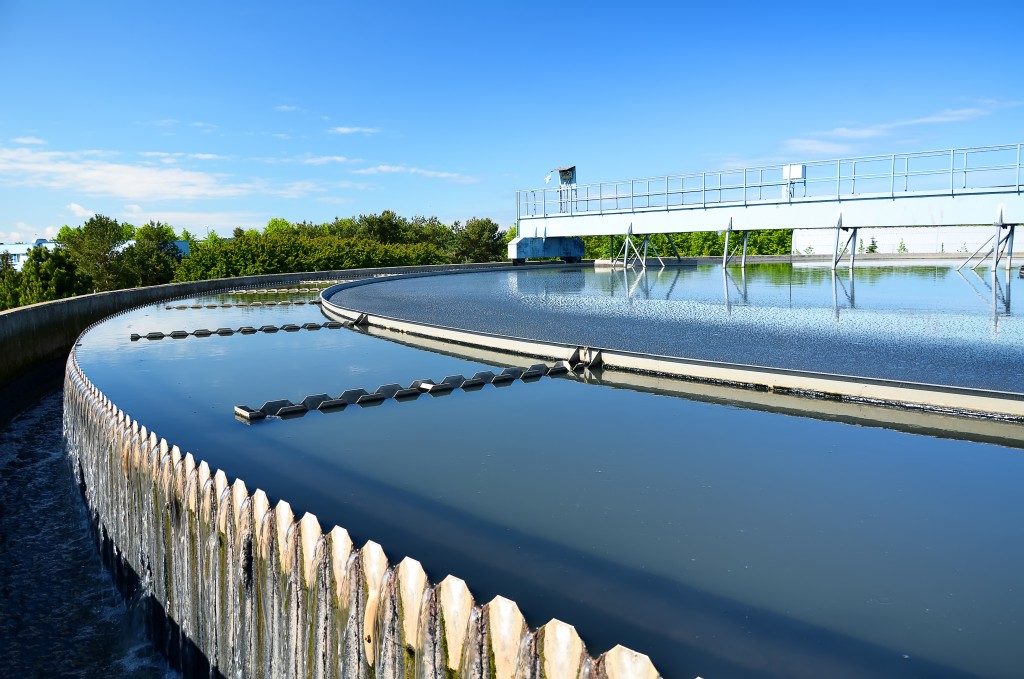What really is in the sewers? Refuse from human habitation or what we call “sewage” end up in the sewers, and from there they head to the wastewater treatment plant. In the U.S. alone, an estimated 34 billion gallons of wastewater is processed in commercial sewage treatment plants. The goal of the sewage treatment plant is to clean the dirty water in order to make it usable again. This involves three basic steps.
1. Primary Wastewater Treatment
When wastewater enters the primary stage, it needs to undergo sedimentation of the solid waste that mixed with the water. This is accomplished after removing larger contaminants from the water, such as soil and food particles.
To remove contaminants, the wastewater is run through a number of filters and tanks. What comes out is called ‘sludge’, which is then fed into a digester that processes it further. The primary sludge has approximately 50% of sediments suspended within the wastewater.
2. Secondary wastewater treatment
Oxidation is used in the secondary treatment to further purify the water. This can be done using any of these three processes:
Biofiltration. This method uses sand filters, trickling filters, or contact filters to further remove sediments from wastewater. For small batch wastewater treatment, the trickling filter method is the most effective.
Aeration. Although the aeration process takes a long time to work, it is an effective one. This involves mixing wastewater with microorganisms, and the resulting mixture is then aerated for 30 hours to achieve the desired results.
Oxidation Ponds. These ponds are ideal for areas with warmer climates, as they need natural bodies of water like lagoons, which must not freeze. For two to three weeks, wastewater is mixed into these natural bodies of water, after which it will be ready for the next step.
3. Tertiary Wastewater Treatment
The last step is essential, as it will remove phosphates and nitrates from the water supply, and this entails the use of activated carbon and sand in the process.
These three processes are the basic steps taken in wastewater treatment and other systems and technologies add more steps to further purify the water.
What is commercial sewage treatment?

Commercial wastewater treatment refers to the same process but on a larger scale, as it is geared towards sewage produced by commercial properties, such as schools, malls, office buildings, hotels, restaurants, etc.
In these bigger properties, commercial wastewater goes through the building’s plumbing system, which transfers the wastewater through various pumps and pipes before releasing it to the main sewer. From there, the wastewater goes to the wastewater treatment plant. If the building is located in the countryside, such as outdoor recreation centers, nature hotels, and caravan parks, it typically would have its own small-scale wastewater treatment system.
Different commercial wastewater systems exist, but one thing they have in common is that they meet current standards and regulations that safeguard public health and the environment. From sewage to clean water, the wastewater treatment technology of today quietly works wonders day-in and day-out.

